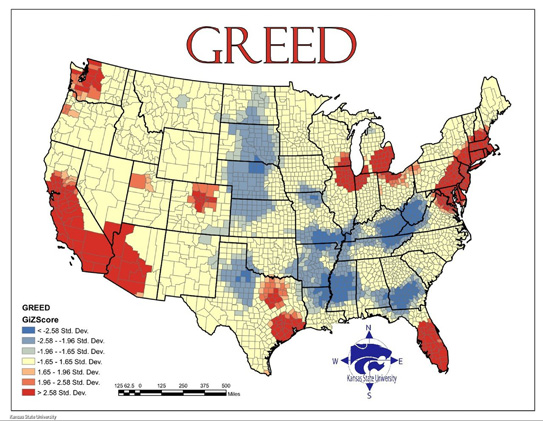we’ve all heard—whether it be in the movie seven or through popular culture references or maybe even your sunday school class when you were 10—about the “seven deadly sins.” they are, of course, lust, gluttony, greed, sloth, wrath, envy and pride. [interestingly, as a sidenote, the seven deadly sins isn’t actually a biblical concept. whereas we can find seven “abominations” in proverbs 6, for example, they don’t really correspond with this list of seven. additionally, in other places, such as galatians, we find lists of virtues that can be contrasted. otherwise, this is purely an early church “invention” to teach people about sinful activities. ok, bible history over.]
recently, the geography department at kansas state university decided to take a look at the seven deadly sins in relation to the united states. how, they asked, do the sins play themselves out geographically? where, geographically speaking, are people the most lustful. where are people most full of wrath and so on and so forth?
how do you quantify these things? well, i’m not too sure if their modes of quantification are the best, but they’re probably as good as anything i could come up with. so, here’s how they did it.
greed was calculated by comparing average incomes with the total number of inhabitants living beneath the poverty line.
envy was calculated using the total number of thefts—robbery, burglary, larceny and stolen cars.
wrath was calculated by comparing the total number of violent crimes—murder, assault and rape—reported to the fbi per capita.
lust was calculated by compiling the number of sexually transmitted diseases—HIV, AIDS, syphilis, chlamydia and gonorrhea (my personal favorite of the group…)—reported per capita.
gluttony was calculated by counting the number of fast food restaurants per capita.
sloth was calculated by comparing expenditures on arts, entertainment and recreation with the rate of employment.
pride, lastly, is most important. the root of all sins, in this study, is the aggregate of all data. the researchers combined all data from the six other sins and averaged it into an overview of all evil.
so, the maps i’m showing here show the “hotspots” for the sins. in other words, the overall data is a little more distributed, but this shows where these things are especially prevalent. for example, on the greed map, the red shows the highest concentrations (southern california, for example), whereas blue shows the lowest concentrations (west central mississippi).
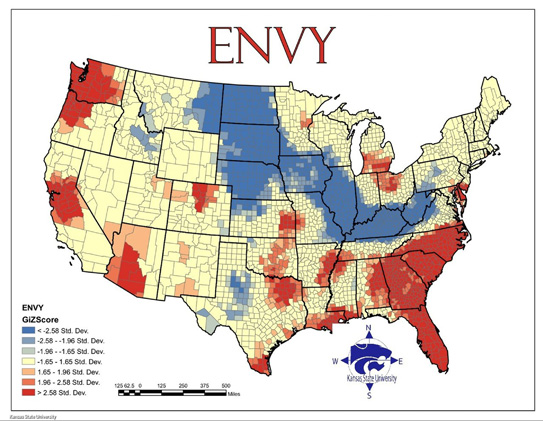
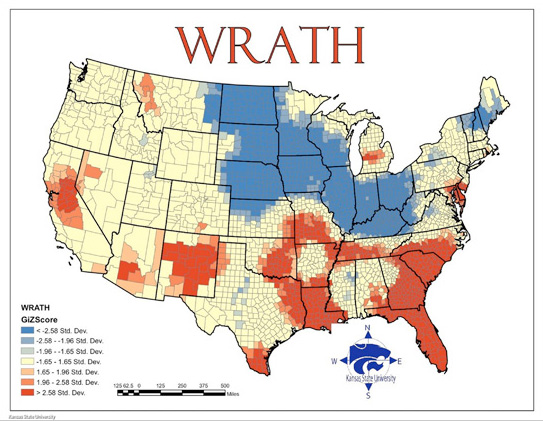
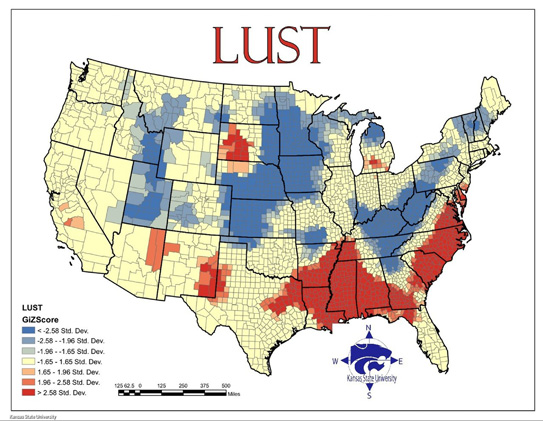
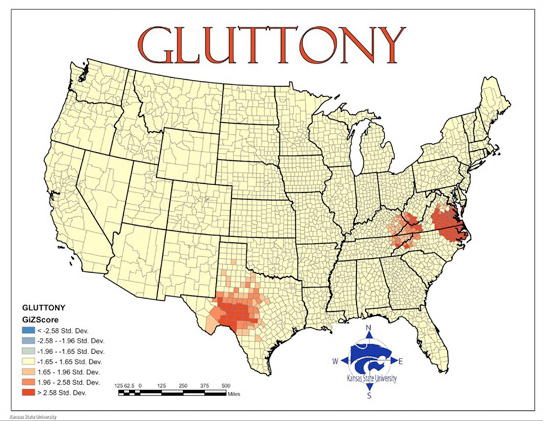
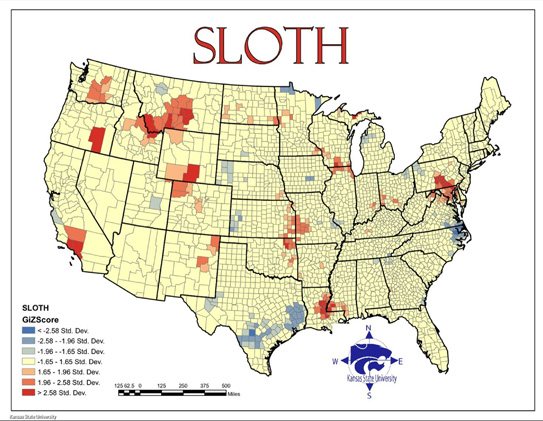
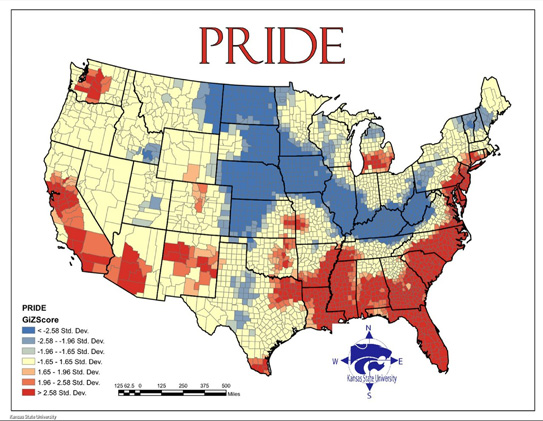
so, a couple observations:
1. don’t sleep with anybody in this region (southern arkansas, mississippi, louisiana, alabama, etc.). std rates are the highest here than any other part of the country. in other words, we’ve got more clap than an audience. we’ve got more crabs than a beach. ok, enough with me offering these classy gems… point is, high percentage of std’s.
2. as a connecting point to my
post concerning safety in little rock, notice the wrath map. there’s a giant ring of murder, rape & assault
around little rock, but
not including little rock. now, very famously documented, little rock has a relatively high crime rate. but, i think what this helps to illustrate is that violence happens in many places and not just the big, bad city. sure, people get killed here, but they also get killed in small town america.
3. oh, the bible belt. you know, heaven on earth. where everybody loves jesus and goes to church and lives in perfect harmony. oh wait, no, i’m sorry, i meant to say that place that, when all sins are calculated (pride map), is the most red of any place in the country. southern california—you know, the land of gays and fornicators—gives us a run for our money, but in the end, southern baptist land wins!
all joking aside, i could make a lot of sweeping generalizations, but i think there are a couple reasons for this (among many, i’m sure). first, poverty plays a big part. when people are poor and desperate, crime and “lax” morality is prevalent. when people feel hopeless because of their financial dire straits, they turn to sex and drugs and food and violence to take the place of hope. secondly, when “everybody’s a christian” (like here in the bible belt), i think, like i’ve argued for a long time, that more “stuff” goes down. when we’ve got our heaven card punched “cuz me and mama and daddy all go down to the baptist church every week and praise jesus”, i think that also means, for many people, that their “do-whatever-i-want” card is punched. maybe i’m making too broad assumptions and generalizations here, but i think there’s plenty of truth in this evaluation.
so, i just thought that was an interesting piece of research—even if, quite frankly, it serves little functional purpose (or maybe it serves a very needed purpose, i don’t know…).
